The unassuming yet quirky hairy bracket mushroom (Trametes hirsuta) is a fun fungus to find. It isn’t edible but commonly shows up in identification requests because it looks passingly like the much sought-after turkey tail mushroom. While it is related to the turkey tail, it does have some key differences that make it easy to tell apart.
The hairy bracket has potential medicinal benefits of its own, which are different from the medicinal turkey tail. It
- Scientific Name: Trametes hirsuta
- Common Names: Hairy Bracket, Hairy Turkey Tail, Velvet Bracket, Velvet Polypore
- Habitat: Dead and dying hardwood trees
- Edibility: Inedible
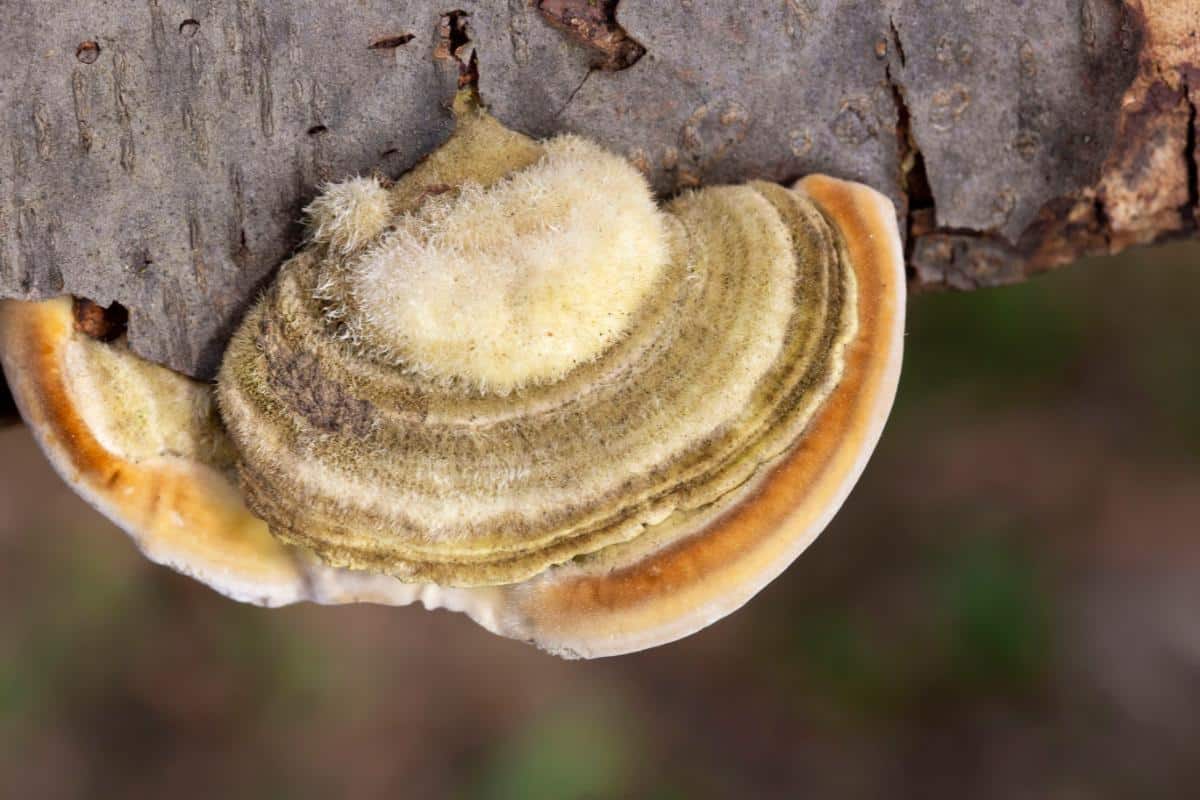
Jump to:
All About Hairy Bracket Fungi
The genus Trametes is derived from the Latin prefix “tram,” meaning thin, and the suffix “-etes,” signifying “one who is.” This aptly describes the slender, bracket-like form of the fruitbodies within this genus. The name “hirsuta,” stems from the Latin word “hirsutus,” which translates to “coarsely hairy” or “shaggy.”
This mushroom was first described and named Polyporus hirsutus. It wasn’t until 1924 that the American mycologist Curtis Gates Lloyd (1859 – 1928) transferred this species to the genus Trametes and gave it the currently accepted scientific name, Trametes hirsuta.
Among the most widely used common names are “hairy bracket” and “hairy turkey tail,” both of which pay homage to the mushroom’s fuzzy, bracket-like shape. In some regions, it is also known as the “velvet bracket” or “velvet polypore.”
Hairy Bracket Identification Guide
Season
The fruiting bodies of the hairy bracket typically appear during the late summer and autumn months, taking advantage of the cooler, more humid conditions that are optimal for fungal growth. However, since the flesh of these fungi is tough and leathery, it’s common to see them in winter as well, especially in more temperate regions.
The tough, corky texture of the fruiting bodies allows them to withstand the elements and remain visible long after many other fungal species have decomposed or retreated underground.
Habitat
This is a saprobic fungus, meaning it derives its nutrients from the decomposition of dead or dying organic matter, specifically the wood of hardwood trees. This species is commonly found growing on the decaying trunks, logs, and stumps of deciduous trees, with a particular affinity for beech wood. It causes white rot in trees on which it grows.
This species always grows on wood, it doesn’t grow on the ground. They also often grow in an overlapping arrangement or fuse together.
This bracket mushroom is widely distributed, with a range spanning across North America, Europe, and parts of Asia.
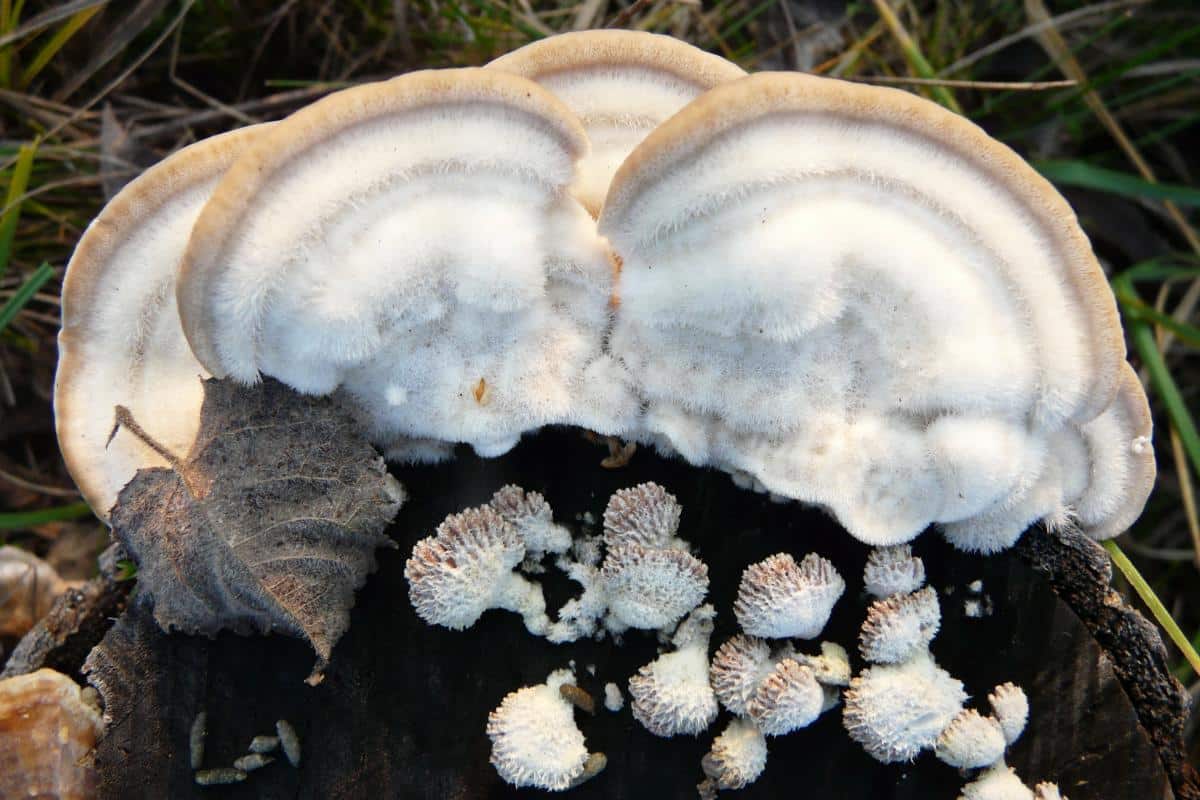
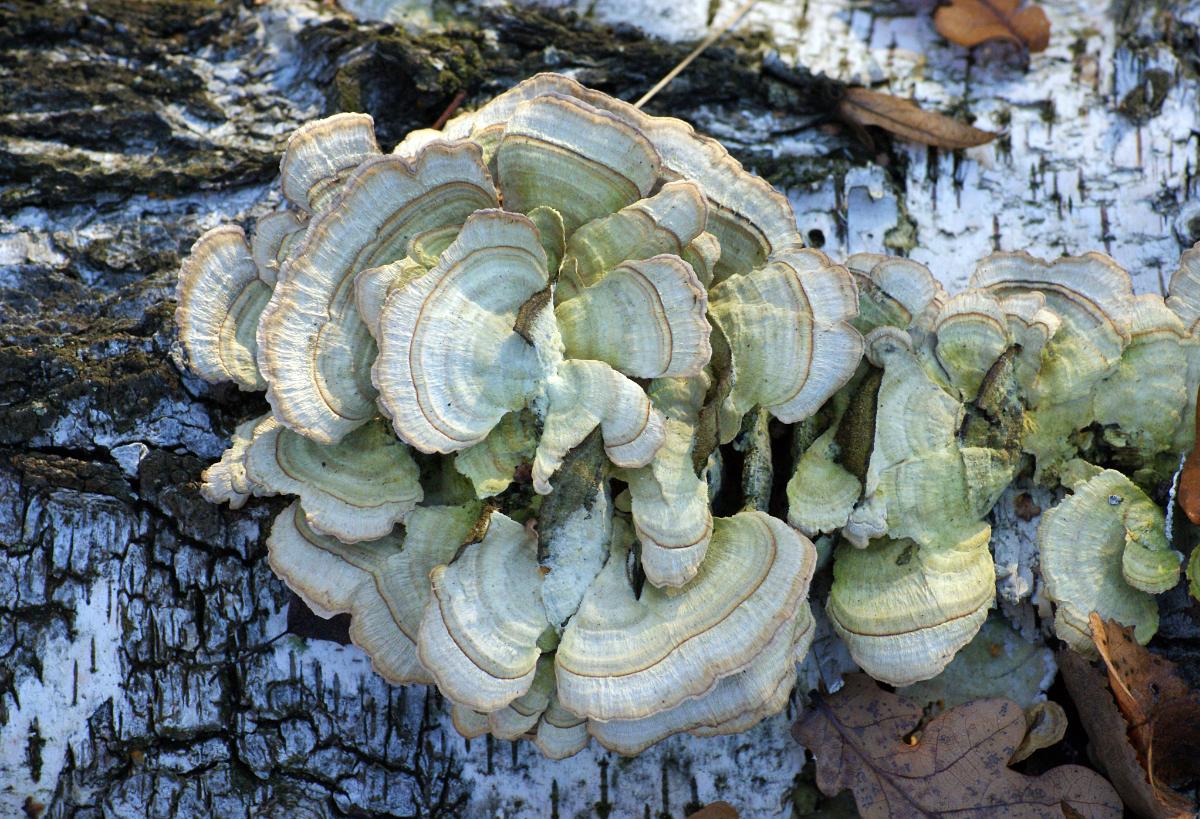
Identification
Cap
The cap ranges from semicircular to irregularly bracket-shaped or kidney-shaped. The caps often fuse laterally, creating intricate patterns and textures. They are covered by lots of thin, erect, whitish hairs that give it a shaggy appearance. The hairs are coarse and dense. Hairy bracket caps grow up to 4″ wide and 2.5″ thick.
Initially, the caps appear white or cream, with a silvery sheen imparted by the delicate hairs. The color around the edge of the cap is usually brown to blackish. The cap darkens to ochre, brown, and gray as the mushroom matures. Frequently, the cap is green which is a result of tiny algae living and feeding on it.
With age, deep concentric zones of texture and color emerge. Zonal coloring is when the colors are separated out in specific bands, much like the colors of a rainbow in design, but with this species, of course, not so bright. The zonal coloring ranges from yellow-ochre to many shades of tan and brown.
These zones are also distinctive because they are created by deep radial furrows that give the mature specimens a ridged appearance. These ridges, combined with the varying shades and textures, make this a unique species.
This species can exhibit a fair amount of color variation, with some specimens displaying a more uniform grayish tone while others may have a more pronounced brownish or yellowish hue. This natural diversity can sometimes complicate the identification process, but the hairy cap, deep zonal ridges, and coloring are the keys to figuring it out.
Pores
Beneath the hairy cap, the pores are white. With maturity, the pore surface gradually transitions to cream, ochre, or pale brown hues, mirroring the color changes on the cap.
Flesh
The flesh of this mushroom is insubstantial yet tough and corky. When you cut through the flesh, it reveals a whitish interior, often with a soft gray upper layer separated from a whitish lower layer by a distinct black plane.
Odor and Taste
There might be a faint anise or licorice aroma when it’s very young and fresh. Otherwise, it doesn’t have a distinctive smell. It tastes very bitter.
Spore Print
This mushroom produces a white spore print.
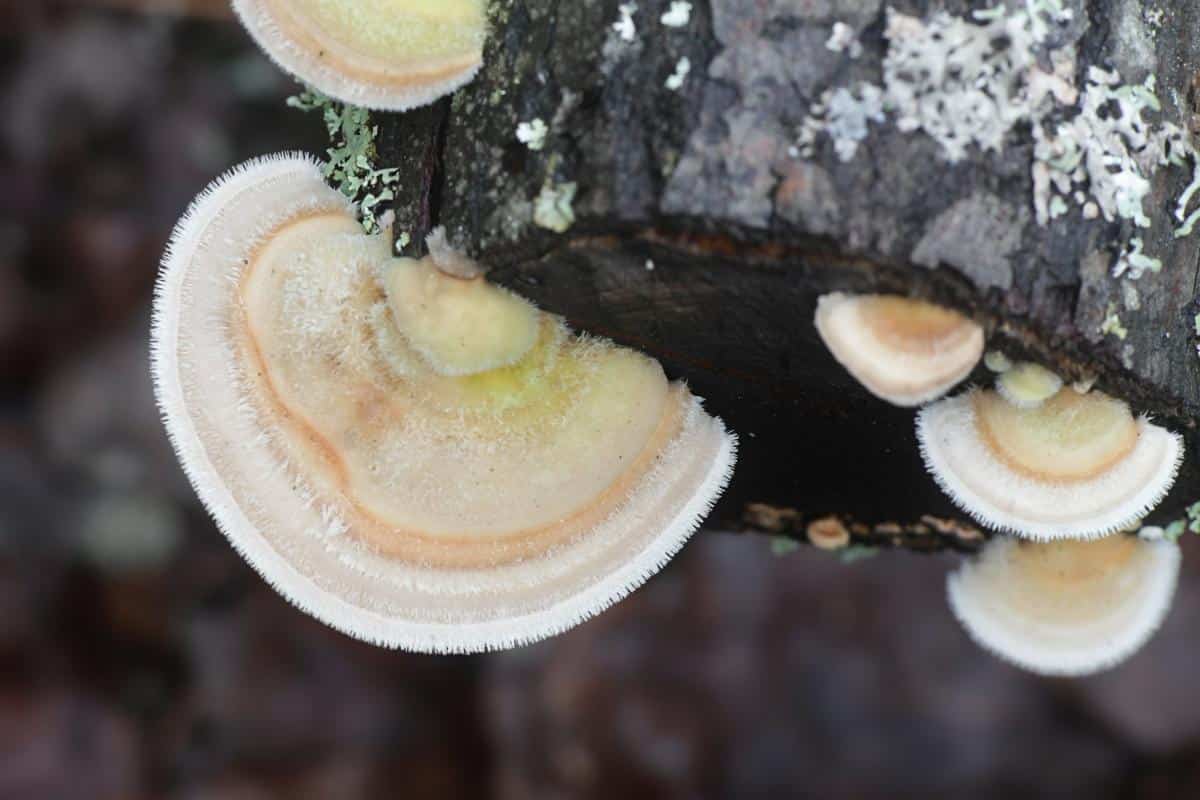
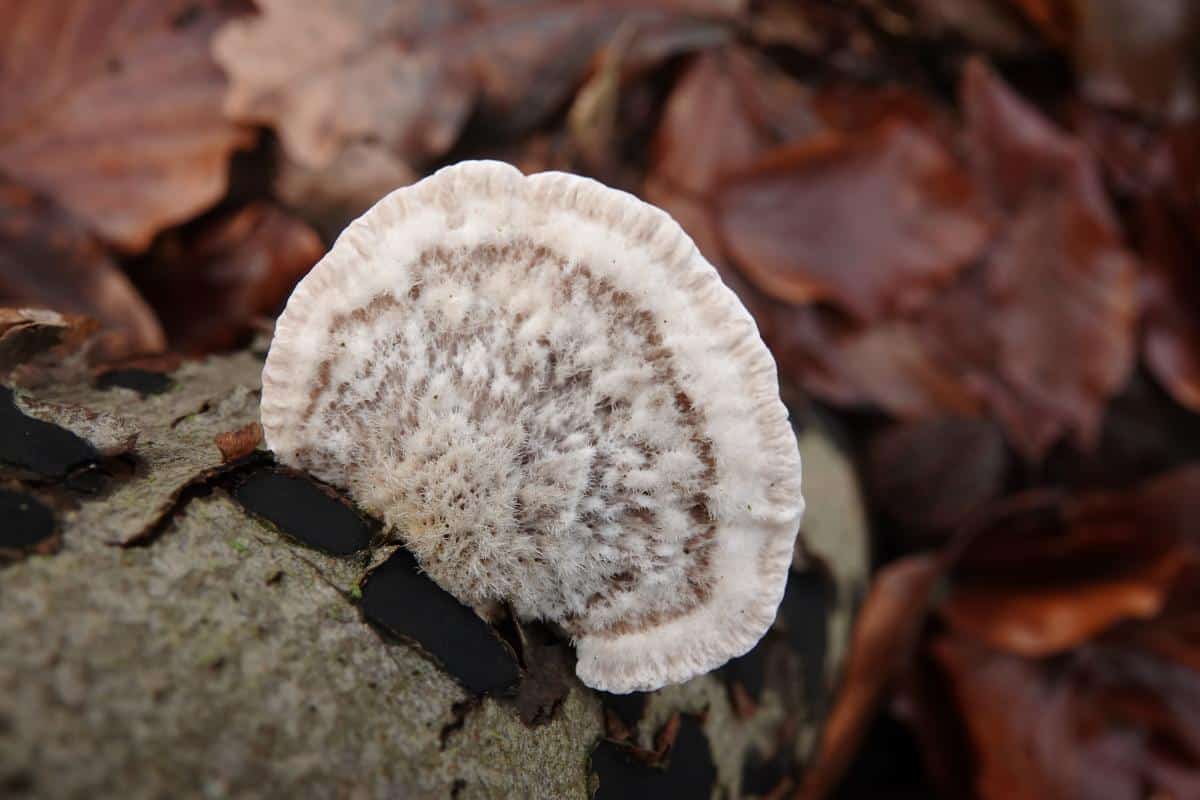
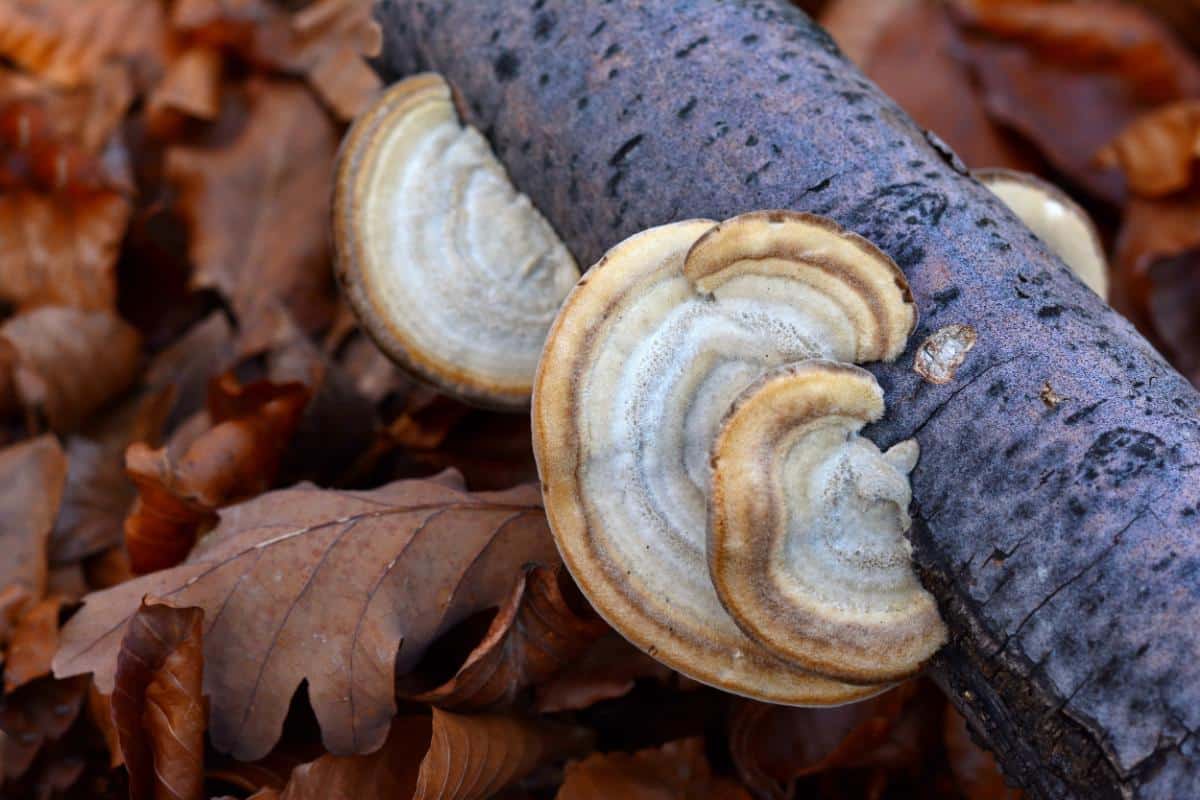
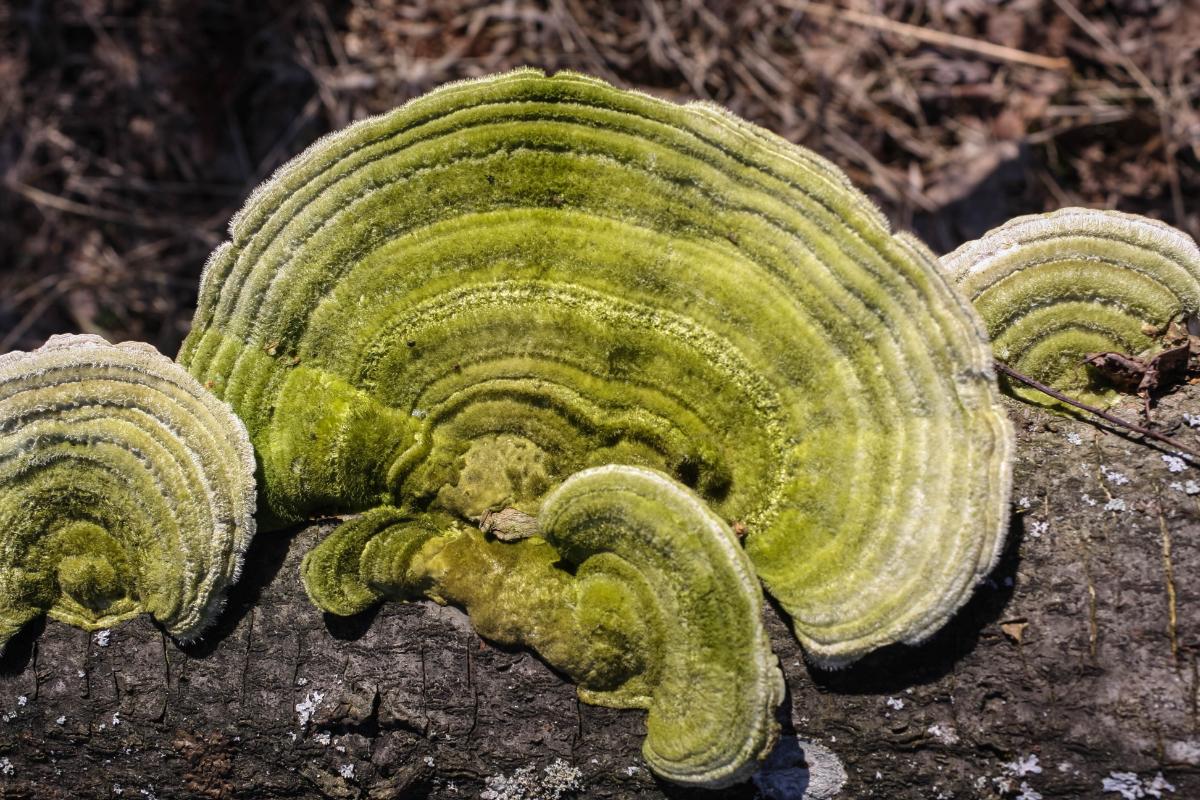
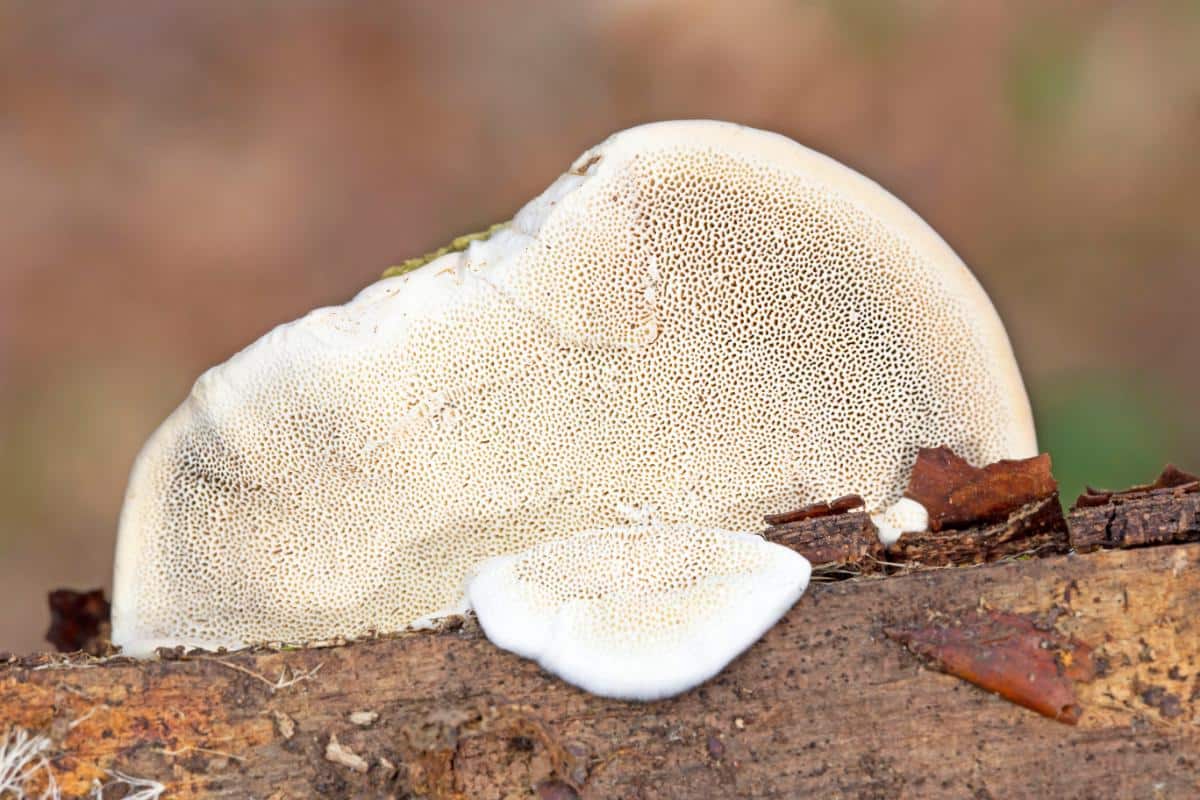
Edibility of the Hairy Bracket Fungus
Despite not being poisonous, the hairy bracket is inedible due to its leathery and tough texture. The brackets of this mushroom are simply too fibrous and unpalatable to be eaten..
Hairy Bracket Mushroom Lookalikes
Downy Bracket (Trametes pubescens)
This mushroom can be easily mistaken for a young hairy bracket since it shares a similar hairy appearance. However, Trametes pubescens lacks the distinct concentric color zones and ridged texture that develops on the cap of the hairy bracket as it matures. Additionally, Trametes pubescens has a finer, more velvety texture compared to the coarse hairiness of Trametes hirsuta.
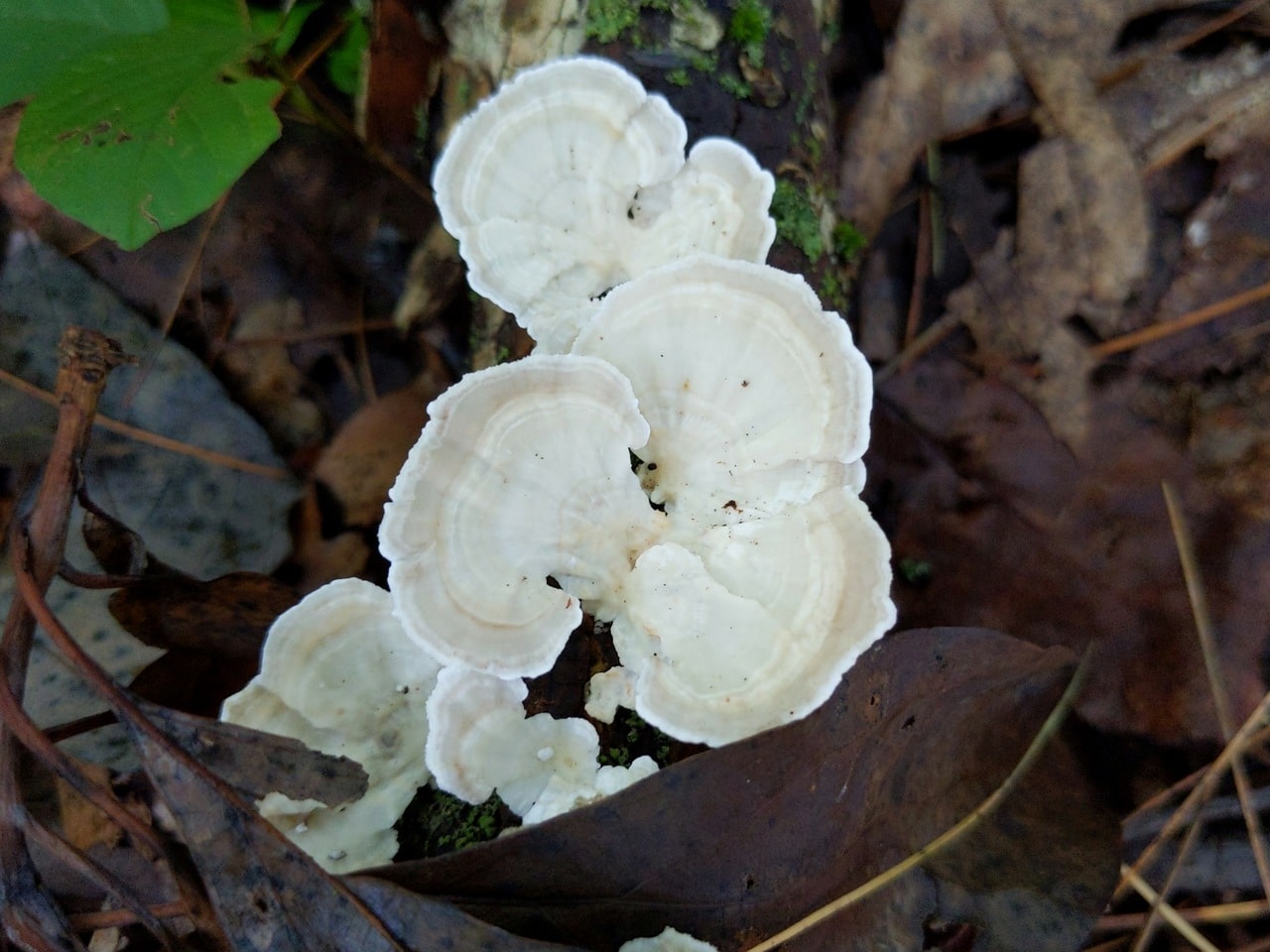
Turkey Tail (Trametes versicolor)
This species is more distinctively zoned than the hairy bracket, with vibrant bands of color ranging from blues and grays to browns and oranges. Turkey tail mushrooms, while usually slightly hairy, aren’t nearly as densely hairy as the hairy bracket.
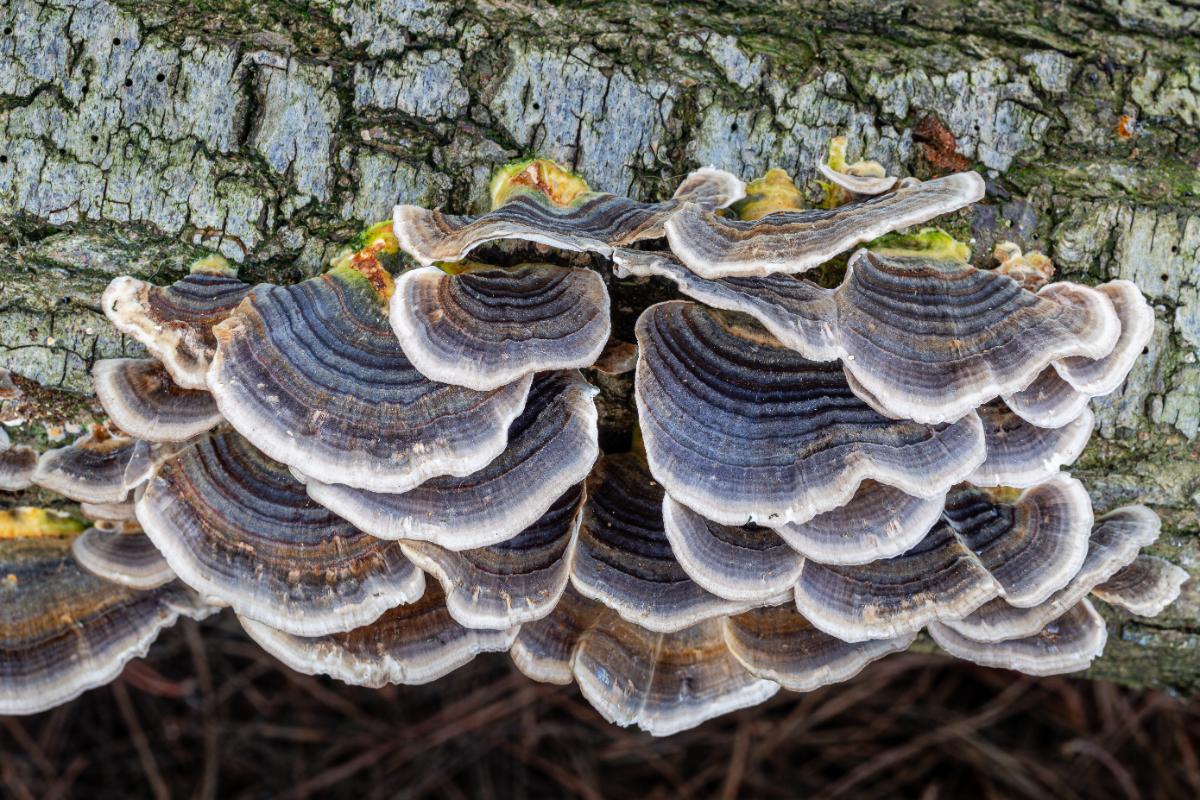
Hairy Bracket 2 (Trametes villosa)
This species is hard to differentiate from the hairy bracket based on physical appearance. It is bracket-shaped, densely hairy, and has grayish to brownish concentric zonal coloring. One key difference is that it grows on conifer and hardwoods, while the hairy bracket only grows on hardwoods. So, if you find a mushroom that looks like this growing on conifer, it is likely T. villosa.
Also, this is a primarily southeastern species, so geographically, you can separate them if you live outside the southeast. The primary way to distinguish these is by their pores, which requires a microscope. The hairy bracket’s pores are larger and have a tooth-like appearance.
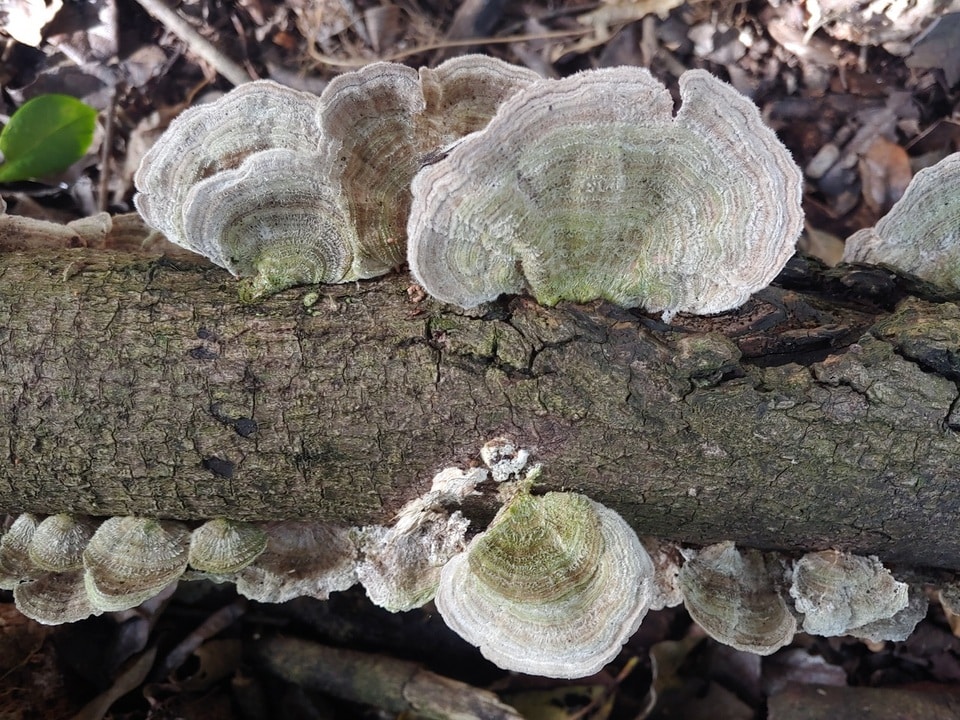
Medicinal Properties of the Hairy Bracket Fungus
The hairy bracket mushroom may possess immunomodulation properties. So far, studies only involve mice, but more studies into this mushroom and its ability to improve the immune system’s functions are certainly coming. This mushroom may also have antioxidant properties and minor cancer cell-killing abilities.
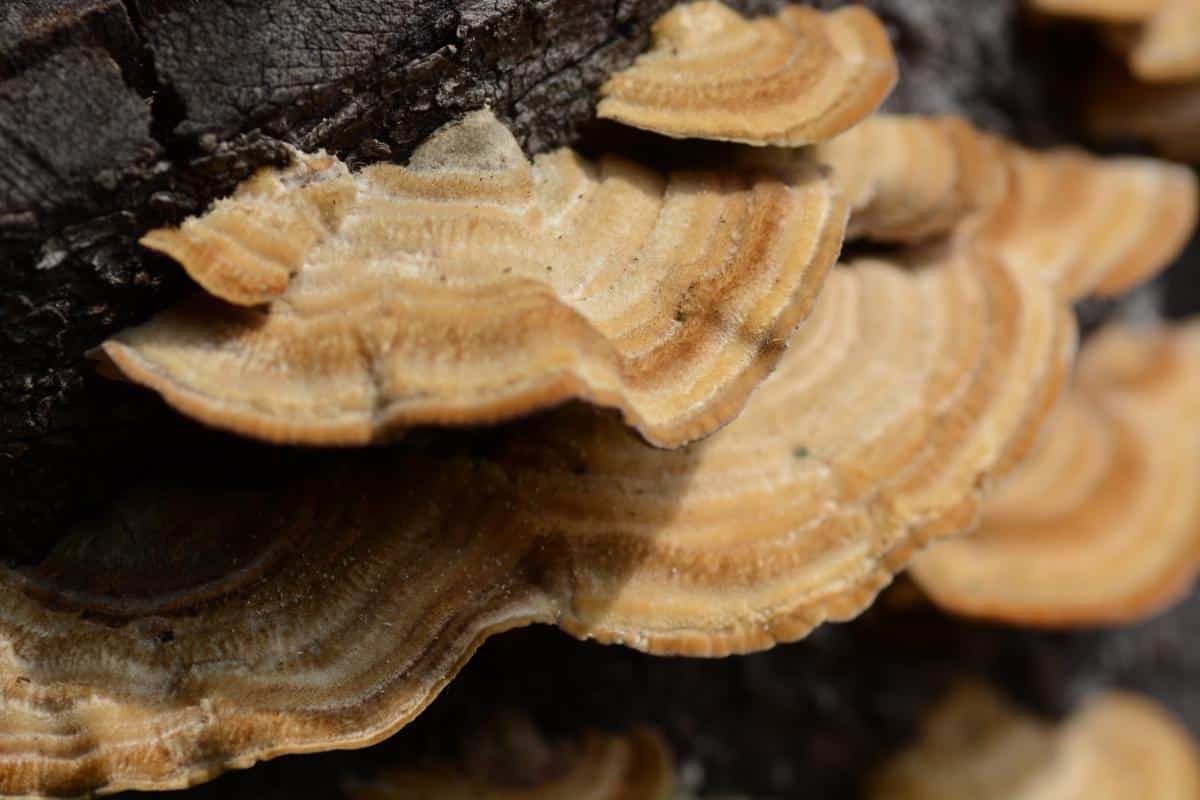
Environmental Remediation with the Hairy Bracket
A recent study from 2020 investigated the potential for using the hairy bracket fungus to help restore soil polluted with heavy metals. This experiment inoculated wheat plants with hairy bracket mushroom mycelium and showed that the wheat plants take up more heavy metals when combined with the fungus. The mushroom combined with certain plants could boost soil remediation of contaminated ground in a more eco-friendly and likely cost-effective manner.
Hairy Brackets and Aromatics
The hairy bracket mushrooms contain an element that can be transformed into piperonal. Piperonal is a rarely found organic compound used by companies to enhance flavors and fragrances. It smells like floral vanilla and is used widely in scented candles, detergents, perfumes, air fresheners, and as a food additive. It can also be used to create the psychoactive drug MDMA (ecstasy).
Hairy brackets don’t produce piperonal; instead, they produce another compound that can be transformed into piperonal with the right processes. Currently, the majority of piperonal used by industries is chemically created, i.e., synthetic.
Using the hairy bracket fungus to create this compound presents a potentially more eco-friendly process with less reliance on chemicals that may be hazardous to people’s health and the environment.
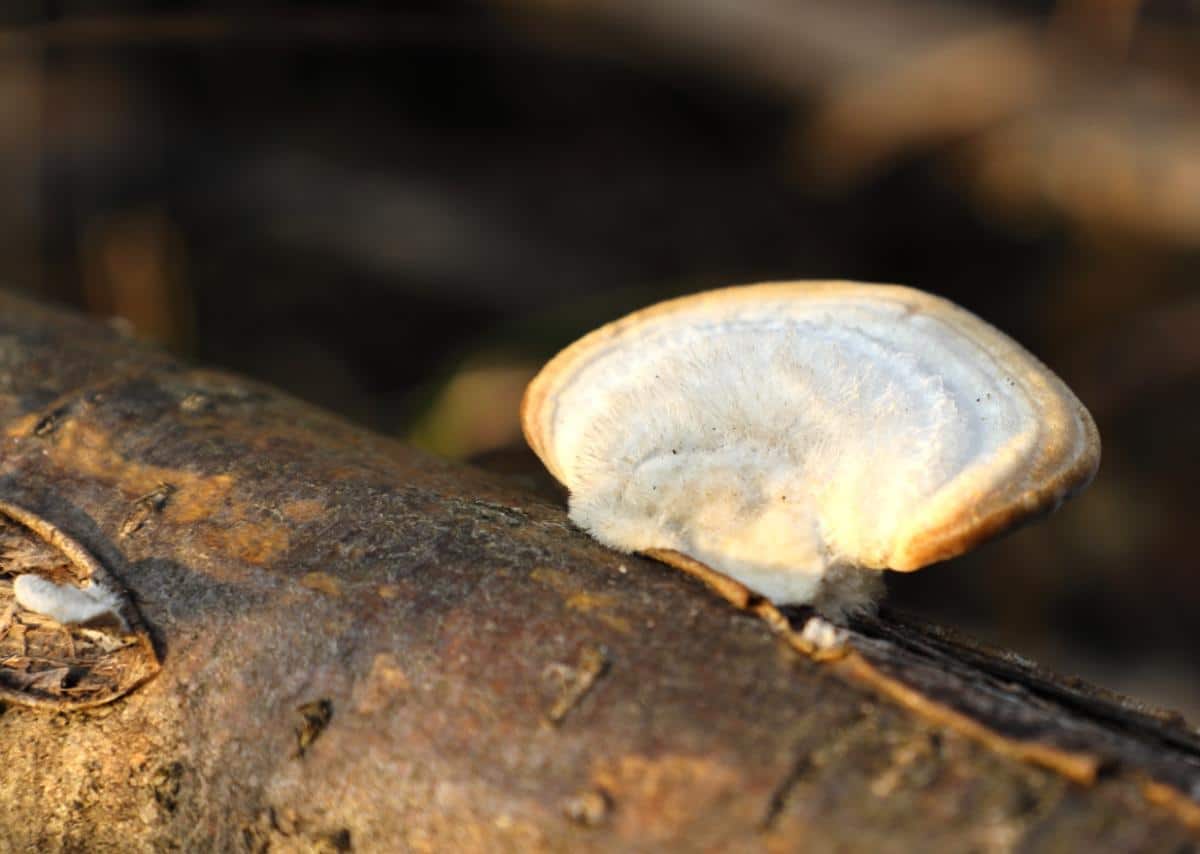
Common Questions About Hairy Bracket Fungi
Is the hairy bracket mushroom medicinal?
The hairy bracket (Trametes hirsuta) shows promise as a medicinal mushroom but nothing is verified yet.
Is hairy bracket fungus edible?
The hairy bracket (Trametes hirsuta) is not poisonous but it also isn’t edible because it’s flesh is extremely tough and corky.






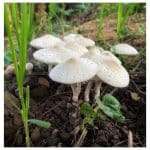
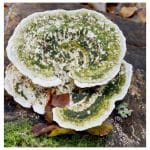
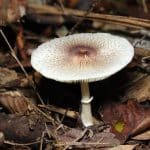
Leave a Reply